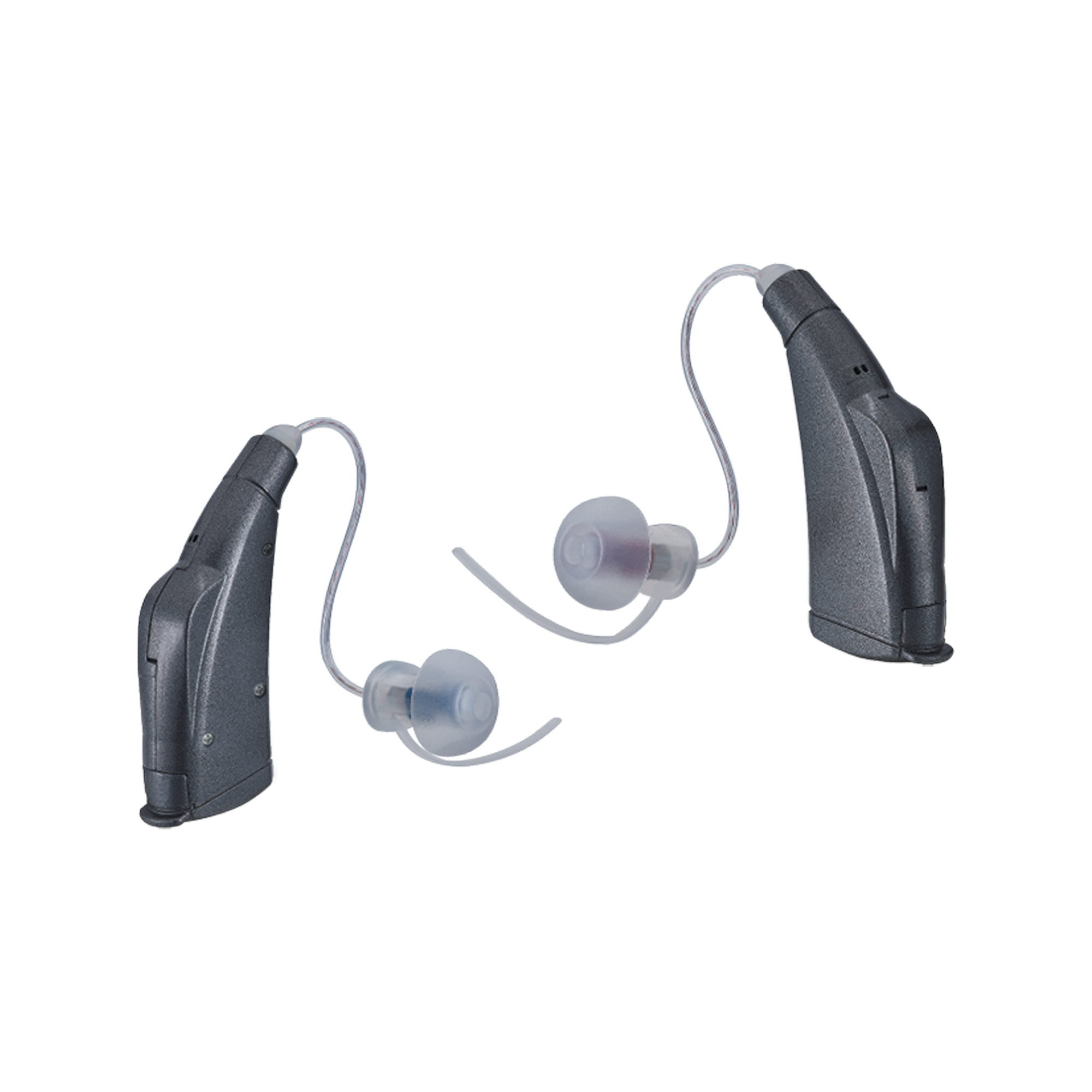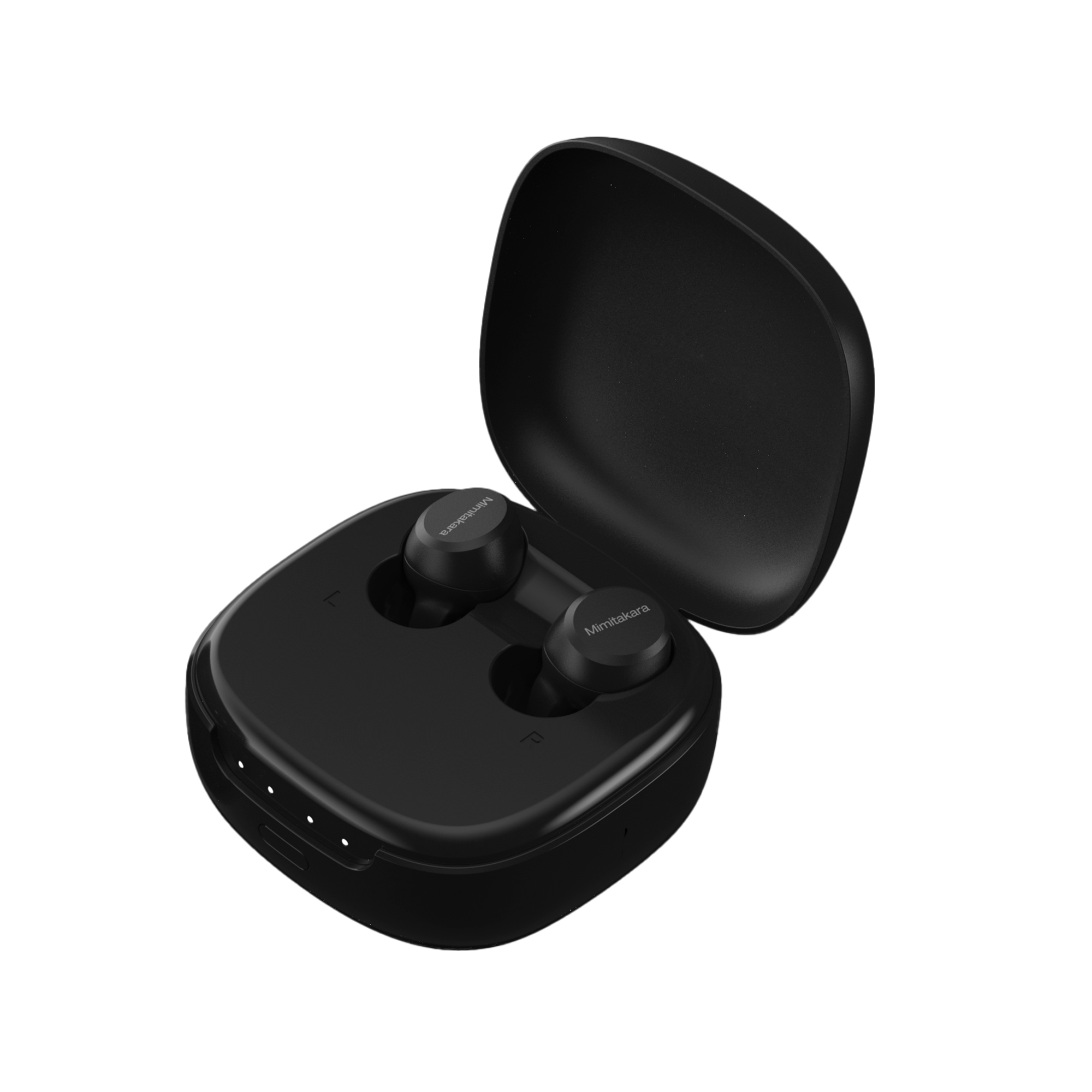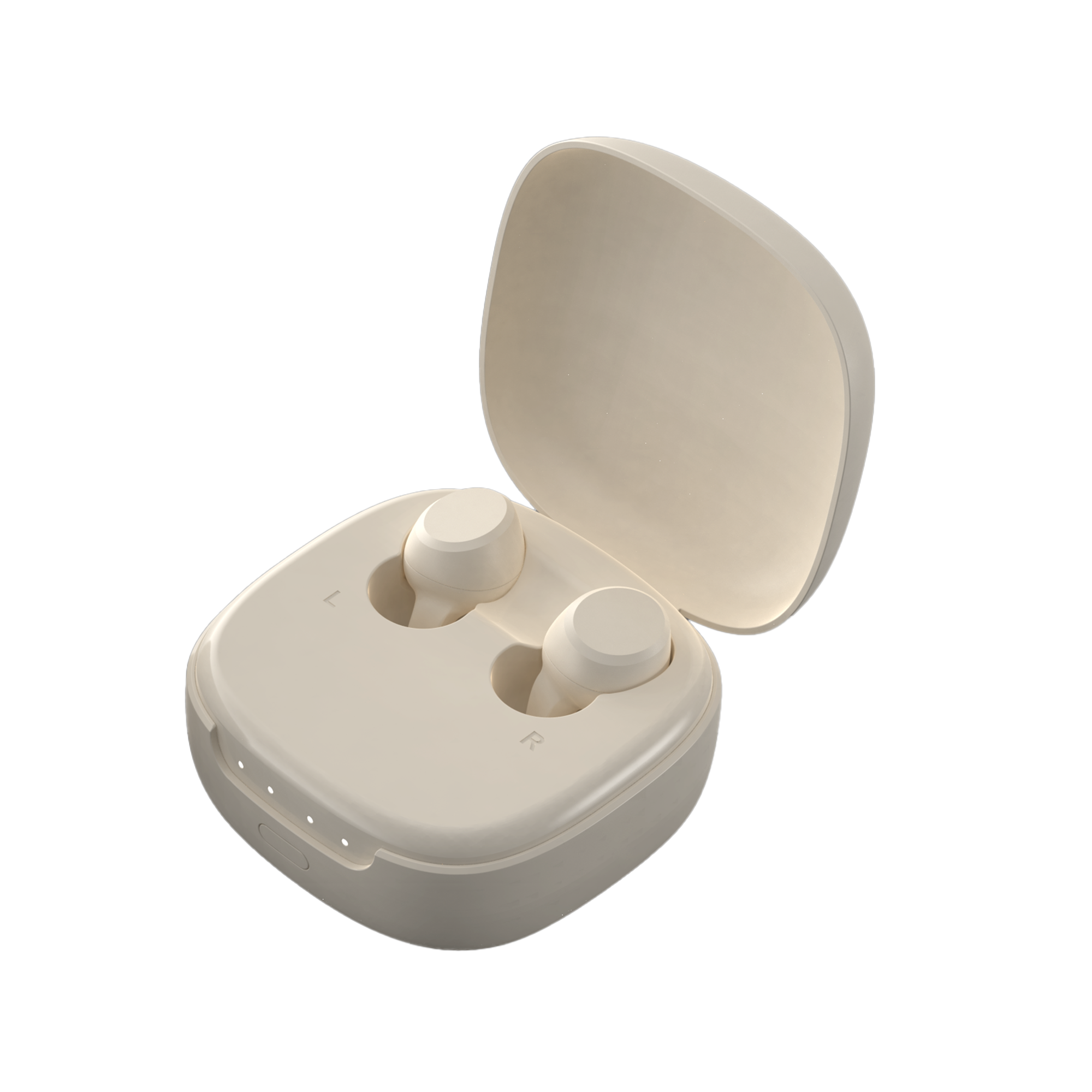Hearing aids amplify sound for those with hearing loss but don’t restore normal hearing or remove all background noise. Various styles, like CIC and behind-the-ear, offer unique benefits in size, visibility, and battery life. Noise reduction, wireless connectivity, and rechargeable batteries improve hearing aids, making them vital for better hearing experiences. Choosing one or two hearing aids depends on unilateral or bilateral hearing loss, emphasizing the need for expert consultation.
Before choosing hearing aids, undergo a thorough hearing test to find the best option based on your hearing loss, lifestyle, and dexterity. Technological advancements now offer over-the-counter (OTC) hearing aids for mild to moderate hearing loss, making them more accessible. This guide provides insights on choosing one or two hearing aids, considering health insurance, financial aid, and the latest technology.

Understanding Hearing Loss
Understanding the types and degrees of hearing loss is essential for choosing the right hearing aid. Here's a breakdown of the types and classifications of hearing loss:
Types of Hearing Loss:
- Conductive Hearing Loss: Occurs when sound is blocked in the outer or middle ear. Common causes include earwax buildup, fluid in the middle ear, infections, and ruptured eardrums.
- Sensorineural Hearing Loss: Results from damage to the inner ear or nerve pathways from the ear to the brain, often irreversible. Causes range from aging, noise exposure, hereditary factors, to diseases like Meniere's and otosclerosis.
- Mixed Hearing Loss: A combination of conductive and sensorineural hearing loss, involving both the outer/middle and inner ear.
Degrees of Hearing Loss:
- Mild: Soft sounds are hard to hear.
- Moderate: Normal conversation is difficult to understand.
- Severe: Only loud voices are barely audible.
- Profound: Only very loud sounds are heard.
Classification Based on Timing and Laterality:
- Pre-lingual vs. Post-lingual: Determines if the hearing loss occurred before or after speech development.
- Unilateral vs. Bilateral: Hearing loss affecting either one ear or both ears.
Two hearing aids are often recommended for bilateral hearing loss to improve balance, sound localization, and understanding in noise. For unilateral hearing loss, a single hearing aid may be sufficient, depending on individual needs and lifestyle.
Understanding these nuances is crucial when deciding between one or two hearing aids, as hearing loss type and severity impact effectiveness. Consulting an audiologist ensures a detailed evaluation and tailored recommendations based on individual needs. Additionally, FDA-approved over-the-counter (OTC) hearing aids provide an accessible solution for adults with mild-to-moderate hearing loss, eliminating the need for a prescription.
Benefits of Two Hearing Aids
Wearing two hearing aids offers significant benefits over one, particularly for those with bilateral hearing loss. Here are some key advantages:
- Enhanced Sound Localization and Safety: Sound Localization: Two hearing aids significantly improve the ability to determine the direction from which sounds are coming. This is crucial not only for everyday interactions but also for safety, as it helps in identifying potential dangers in the environment. Safety Considerations: Better sound localization contributes to safer navigation in various settings, particularly in traffic or crowded places.
- Improved Speech Understanding and Listening Comfort: Speech Clarity in Noise: Wearing two hearing aids helps in distinguishing speech from background noise, making conversations easier to follow in noisy environments. This is due to the binaural summation effect, where the brain combines auditory inputs from both ears to filter out unwanted noise.Reduced Listening Effort: With both ears assisted, the strain of trying to hear with only one good ear is eliminated, reducing listening fatigue and making communication more enjoyable. Music and Television: Enhanced auditory input from two hearing aids provides a richer and more balanced sound experience when listening to music or watching television.
- Preservation of Auditory Health and Function: Auditory Deprivation: Using two hearing aids prevents the unaided ear from auditory deprivation, which can lead to deteriorated hearing ability over time. Tinnitus Relief: For individuals experiencing tinnitus, using two hearing aids can provide more effective relief. The additional stimulation helps mask tinnitus sounds and makes them less noticeable. Long-Distance Hearing: The ability to hear sounds from a distance is greatly improved, which is beneficial in various social and public scenarios.
These advantages underscore the importance of choosing dual hearing aids for those with hearing loss in both ears. Consulting an audiologist is vital to assess individual needs and find the most effective, balanced hearing solution.
When is One Hearing Aid Sufficient?
Deciding between one or two hearing aids often hinges on the specific hearing loss condition of an individual. Here are scenarios when one hearing aid might be sufficient:
- Unilateral Hearing Loss: If a person experiences hearing loss in only one ear while maintaining normal or nearly normal hearing in the other, a single hearing aid is typically adequate. This setup helps balance the hearing capabilities without unnecessary intervention in the ear that hears well.
- Financial and Personal Considerations: Cost Concerns: The decision to opt for one hearing aid may be influenced by budget constraints. Hearing aids can be expensive, and not all costs are covered by health insurance. In such cases, if one ear has significantly better hearing than the other, it might be economically sensible to aid only the impaired ear. Trial Periods: For those uncertain about the benefits of dual hearing aids, many audiologists offer a trial period. This allows users to assess the difference in hearing with both one and two devices. If there is no noticeable improvement with two, they may choose to continue with a single hearing aid.
- Real-Life Application and Professional Advice: Case Example: Mark Pollard, a patient from the Berkeley Hearing Center, encountered single-sided hearing loss due to head trauma during his teens. By using a non-invasive hearing aid on the affected side, he noted a significant enhancement in his quality of life, demonstrating that one well-fitted hearing aid can be sufficient depending on the individual’s condition and lifestyle needs. Audiologist Consultation: It is crucial to consult with a hearing professional who can evaluate the degree of hearing loss and lifestyle needs. This personalized assessment helps in making an informed decision about whether to use one or two hearing aids.
Selecting the right number of hearing aids goes beyond hearing improvement, enhancing communication, safety, and overall quality of life. Each case should be considered individually, with professional guidance, to determine the most effective auditory support strategy.
Technological Advances in Hearing Aids
Technological advances in hearing aids have significantly enhanced their functionality and user experience. Modern hearing aids feature advanced technologies designed to enhance hearing in diverse environments and meet individual needs. Here are some of the key technological enhancements.
- Automatic Sound Adjustment: Environment-Based Processing: Modern hearing aids automatically adjust settings to optimize sound quality based on the surrounding environment, whether in a quiet room or a noisy street. Directional Microphones and Noise Management: These features enhance speech understanding in noisy settings by focusing on the direction of the speaker and reducing background noise.
- User Interactivity and Connectivity: Smartphone Integration: Users can adjust volume and settings directly through smartphone applications, enhancing ease of use and accessibility. Streaming Capabilities: Direct streaming of audio from devices such as smartphones and TVs is now possible, providing a seamless listening experience. Feedback Cancellation: Advanced feedback suppression technologies eliminate annoying whistles and buzzes, ensuring clearer sound.
- Innovative Designs and Specialized Functions: Rechargeable Models: These eliminate the need for frequent battery replacements, offering convenience and cost savings. Hearing Aid Styles and Customization: From discreet completely-in-the-canal models to more robust behind-the-ear designs, users can choose based on comfort, aesthetic preferences, and hearing needs. Specialized Hearing Solutions: Devices like CROS and BiCROS hearing aids are designed specifically for unilateral or asymmetrical hearing loss, directing sound from the impaired ear to the better-hearing ear.
Advancements improve hearing while adding health tracking and awareness, making hearing aids holistic health tools.
Professional Recommendations
Audiologist recommendations are crucial in deciding between one or two hearing aids, especially for unilateral or bilateral hearing loss. Here are the essential guidelines and practices advised by hearing specialists:
- Trial and Customization: Trial Basis: If an audiologist recommends two hearing aids but the individual is uncertain, they should inquire about using both on a trial basis. If no significant improvement is noticed with two, the option to return one should be available. Custom Fitting: Hearing aids, whether Behind-the-Ear (BTE) or In-the-Ear (ITE), are tailored by audiologists to fit the unique contours of each ear and the specific hearing loss needs. BTE models are generally adaptable to most ears but might require some customization for optimal comfort and effectiveness. Conversely, ITE models are custom-molded to fit the ear perfectly.
- Programming and Maintenance: Prescriptive Adjustments: Hearing aids are programmed to a specific prescriptive level using real-ear measurements, which can be finely adjusted with computer software in the audiologist's office to suit individual hearing profiles. Ongoing Care: Regular maintenance is crucial for the longevity and effectiveness of hearing aids. Proper care includes routine cleaning and checks to reduce the need for repairs. Audiologists often provide guidance on how to maintain and care for devices effectively.
- Systematic Field Trials: Field Testing: Audiologists may conduct systematic field trials, allowing patients to test both unilateral and bilateral fittings in their daily environments. This practical approach helps individuals directly compare the benefits of one versus two hearing aids in real-life scenarios. Comprehensive Evaluations: It is essential to consult a hearing specialist for a thorough hearing evaluation. This assessment helps customize both the physical and acoustic fit of the device, ensuring it meets the individual's specific needs.
Here's a recommendation table of how many hearing aids you should be wearing:
| Scenario | One Hearing Aid | Two Hearing Aids |
| Single-sided hearing loss | Best | Some cases use binaural contralateral transmission |
| Better Ear | Acceptable | Best |
| Worse Ear | Poor | Best |
| Both Ears Similar | Acceptable | Best |
Professional recommendations ensure individuals receive the best hearing aid configuration, improving hearing and overall quality of life.
Making the Right Choice for You
Choosing the right hearing aids requires evaluating various factors to find a device that suits your specific needs. Here's a guide to help you navigate through the options:
- Evaluate Your Hearing Loss: Audiogram Review: Start by examining your hearing test results. This will help determine whether you have unilateral (one ear) or bilateral (both ears) hearing loss, which significantly influences whether one or two hearing aids will be beneficial. Hearing Aid Style and Features: Depending on the severity and type of your hearing loss, select from styles like completely-in-canal (CIC), behind-the-ear (BTE), or others. Features such as Bluetooth capabilities, feedback suppression, and noise-reduction should also be considered.
- Consider Lifestyle and Budget: Functionality and Lifestyle Needs: Assess how the features of different hearing aids align with your daily activities. For instance, if you frequently attend social gatherings, look for advanced noise-reduction capabilities. Budget Constraints: Hearing aids can vary significantly in price, from $99 to $7,000 per pair. Determine your budget early in the process and check what features you can get within your price range without compromising on quality.
- Trial and Adjustment Period: Test Drive: Utilize the 30-day trial periods offered in many states to experience how the hearing aids work in your everyday environment. This is particularly important if you're trying to decide between one or two devices. Fitting and Adjustments: Allow time for adjustments. Fitting by a specialist is crucial as it ensures the hearing aids are tailored to your ears and hearing needs. Remember, adapting to new hearing aids is a process that may require several fittings.
Carefully evaluating these factors and consulting a specialist ensures an informed decision that improves hearing and quality of life.
Conclusion
Choosing between one or two hearing aids requires understanding the nature of hearing loss, whether unilateral or bilateral. This article has provided a foundational guide, emphasizing the importance of professional consultations and the benefits hearing aids offer for one or both ears. Personalized auditory solutions are essential for improving quality of life, showcasing the transformative impact of properly fitted hearing aids.
Navigating the complexities of hearing loss reveals that the path to optimal auditory support is deeply personal. Choosing between one or two hearing aids depends on factors like the type of hearing loss, lifestyle, and technological advancements. For those seeking hearing assistance, starting this journey with knowledge paves the way to auditory improvement. Explore OTC hearing aid options at the Mimitakara shop to discover solutions tailored to your needs, taking a step toward enhanced hearing and a richer soundscape in your life.
FAQs
1. Should I wear one or two hearing aids? A: If you have hearing loss in both ears (bilateral hearing loss), wearing two hearing aids is typically recommended. Using two devices enhances sound clarity and helps your brain process signals from both ears more effectively.
2. What are the most popular styles of hearing aids currently? Popular hearing aid styles include:
- Receiver-in-the-canal (RIC): Fits behind the ear with a receiver connected to an earpiece.
- In-the-canal (ITC): Fits partly in the ear canal.
- Completely-in-the-canal (CIC): Fits entirely inside the ear canal.
- Invisible-in-the-canal (IIC): Sits deep within the ear canal, making it nearly invisible.
These styles offer various options to meet diverse needs and preferences.










